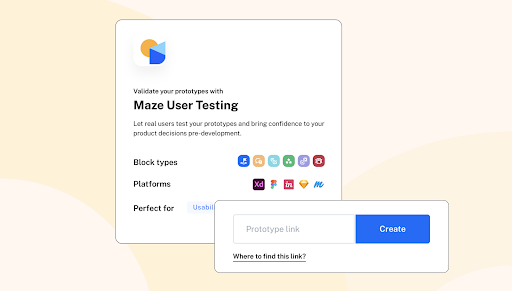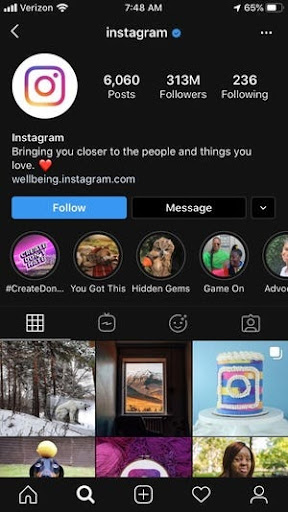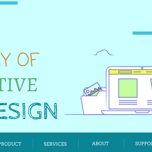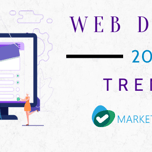- Market-Inspector.co.uk
- Blog
- UX Design Trends
Top UX Design Trends for 2022
Following trends is essential if you want to make the user experience good. Designers attempt to follow the trends since they show them what users want and need.
But, in addition to keeping track of the current trends, it’s wise to learn more about the ones to come. Knowing about the trends that the future holds gives you an even bigger advantage – you can predict the future demands and requests from the users.
While no one can guarantee what will be trending 10 years from now, especially in these uncertain times when we struggle with a pandemic, you can definitely analyze the website design trends that will occur in the near future. Based on what we know about the needs and demands of the market right now, here is what we predict the biggest 2022 trends to be.
1. Usability Testing
Maze, a leading company in user testing has set the UI design definition:
“User experience (UX) design is the process designers use to create products that deliver relevant and valuable experiences to users.”
As a brand that’s highly recognized and used by designers worldwide, this company facilitates one highly effective way of figuring out the customers’ pain points for providing better customer service.
Designers no longer have to guess what their customers want. Thanks to testing and tools like Maze, they can collect the most useful data for their business. The collected data can help them find out the flaws and perks of their design, as well as the needs of the user.

User-based testing can help you identify UX challenges and address them early in the process. When done regularly, it can help improve the design and with it, the overall experience. Some of the benefits of such testing include:
2. Creation of Super-Apps
It all began in Asia, with a huge potential to become the next great thing in UX design. It surely has – super-apps are really trending right now, even though we have yet to see more of them in the years to come.
The first to introduce a super-app was Tencent. Their WeChat application has gone viral in a very short timeframe, allowing users to enjoy integrated services such as payments, social media, messaging, food delivery, etc. Instead of downloading and using separate apps for all, Tencent gave them the option to get everything at their fingertips in a single app.
The interest across the globe is already showing. According to BBC, the race to “build the world’s next super-app” has already begun. Google started integrating multiple apps for Hangout Chat, Google Meet, and Gmail into its single Gmail app.
Twitter is following this trend, too. They’ve added “Spaces”. BBC lists three companies as the frontrunners in this so-called race: SEA Group, Gojek, and Grab. Alibaba has already invested in them, followed by Google, Facebook, and PayPal.
Based on all we know right now, it is without a doubt that we can expect super-apps to be trending in 2022 – and probably in the years that follow, too.
3. Minimized App Complexity
There are so many applications and tools available that users easily get overwhelmed. By the point where they find your design, they have probably gone through several choices. Offering them something messy doesn’t help your design. All those extra functionalities and features in a design that were trending in the past couple of years are now becoming clutter.
Very soon, possibly in 2022, designers will get requests to minimize the design and app complexity. The interfaces of the future will be more intuitive and cleaner.
4. Design Systems
Design systems have already proven themselves to be quite helpful to designers. These allow for faster and more accurate work since the same quality and standard are maintained. Basically, a design system has a common library of designs to be used by collaborators or external parties.
The big companies have already started using design systems to speed up the process and facilitate the designers’ work. Soon enough, we can expect more and more companies to create their unique design systems. As Norman Group describes it: “Design (and development) work can be created and replicated quickly and at scale.”
5. Inclusive Design
Nowadays, inclusive designing is more than just about accessibility. The whole concept of user experience is to make the design usable by more people from the target audience. This audience includes people with different demographics and needs. That’s why the modern UX design considers a variety of human factors such as gender, race, sociocultural background, language, and even disabilities.
Inclusive design is not really a new thing, but more and more designers are working toward making their products this way. That being said, we can expect an even bigger demand for it in 2022.
6. Localised and Personalised UX
Next year will be all about delivering localised, more personalized content and user experience. Even now, some platforms allow users to customize the notifications and some of the content. Soon enough, we can expect users to have even more control over the design they see, given the opportunity to make it as they wish.
Since online shopping is more widespread than ever and people make purchases from miles away, this is more than a preference. It has become a necessity, especially due to big changes in how people perceive design.
Take, for example, users in Asia. Most of the time, they use their phone number to log in or place an order. In Europe and most of the Western markets, people prefer using emails and are not comfortable with giving their phone numbers.
Starting from 2022 and going beyond, we can expect the trade wars and barriers to lead to multiple sets of standards. This shall amplify the demand for UX localization.
7. Abstract Data Visualisation
Tables and lists were trending a lot in the past couple of years, but this year, we noticed that people aren’t responding as well to them as they did before. They now prefer simplicity and design that allows them to complete their attended task faster.
Abstract data visualization can offer higher originality of the design, minimize the time users need to get acquainted with the product, and can generally improve communication with potential users.
8. Augmented and Virtual Reality
VR and AR are massive these days, especially in UX design. The pandemic has prompted even wider use of AR solutions. Companies started using AR to assist clients in making their decision and better promote their products.

Take, for example, the IKEA Place design. Thanks to this AR design, users can virtually place 3D models of selected products in their houses to visualize what they’d look like. It shows them whether the products fit into the space and the interior.
Let’s not forget about how famous VR and AR are in the gaming design world, too. The game industry is currently the leader in virtual reality development. Right now, we have access to games like Boneworks, Microsoft Flight Simulator, and Half-Life: Alyx.
9. Dark Mode
Dark mode is a newer trend, one that developed in 2020. Instagram was the first to introduce this trend when they update the application’s interface. They started it as a test mode, but soon after, Apple picked it up, therefore unraveling a whole new trend.
Source
Judged by its popularity right now, we can only expect this trend to keep growing. Mobile games have started offering the alternative of dark mode, sometimes mixing colors like black, green, and brown.
The reason why this is trending is not just because it is something new and different. Dark modes save the battery on mobile devices, are excellent in highlighting the design elements, and don’t pose a big visual workload on the user.

10. Uncommon and Irregular Designs
The number of websites and designs grows all the time and people get bored by seeing the same things, over and over again. They look for something different, which is why uncommon designs are trending nowadays.
Irregular animations and illustrations can attract and retain the interest of users. Their choices are creative, artistic, and yet simple and memorable.
The Importance of UX in 2022
2022 is just beginning and even now, we are witnessing tremendous changes in the UX design world. How we design is greatly affected by the changing preferences of the target audience, as well as the creation of new technologies.
No one can know with certainty where this will take us, but one thing is for sure – these trends are at their peak and here to stay!
We strive to connect our customers with the right product and supplier. Would you like to be part of Market Inspector?





